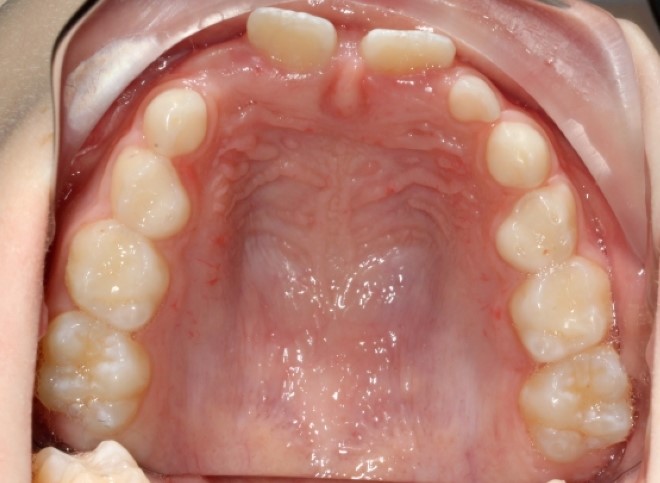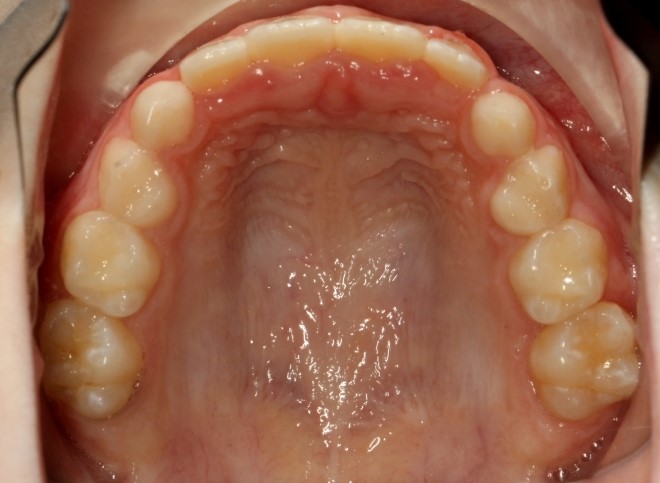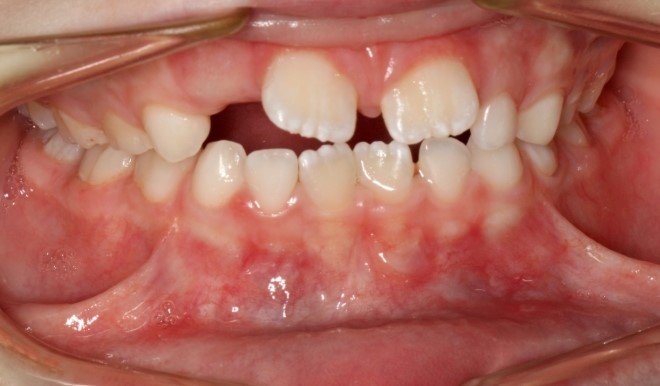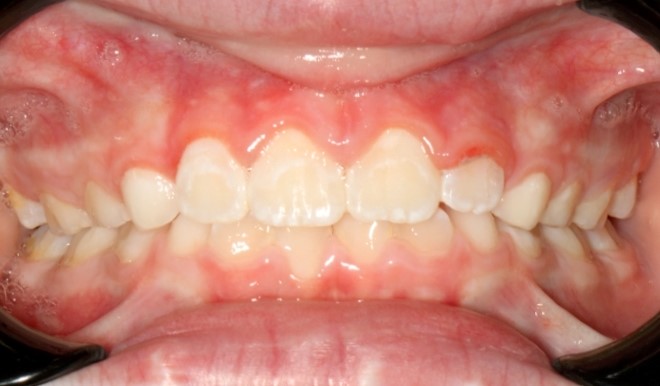Thumb sucking is well known as a source of orthodontic issues in young children. Though sucking is a natural impulse for infants, leading many parents to rely on pacifiers or allow thumb sucking as a form of self-soothing, it’s not ideal to allow the habit to persist. Thumb sucking doesn’t just displace teeth from their proper alignment; it can also negatively impact the shape and growth of the palate and the jaw. Examples of possible problems include protruding front teeth (“buck teeth”), an open bite (where the upper and lower front teeth do not overlap), and crossbite (when upper teeth fit inside the lower teeth instead of outside).
Of course, as many parents know, discouraging thumb sucking can be a difficult challenge, and despite their best intentions their child may continue sucking on their thumb or fingers well past infancy. Fortunately, early orthodontic care can help identify and correct emerging orthodontic issues while they are more easily addressed, as well as assisting in breaking harmful habits that could cause further problems.
The case of a young boy who we treated at B Orthodontics illustrates what is possible through Phase I treatment in these situations. In only one year of treatment, we were able to correct multiple orthodontic problems caused by his thumb sucking and position him for healthier oral development as his permanent teeth emerge in the years to come.


The Situation and the Solution
The patient was brought to our practice at age 6 years, 11 months. His persistent thumb sucking had produced an anterior open bite and a narrow upper arch, as well as delaying the eruption of certain permanent teeth. In an anterior open bite, the front teeth slant upward and outward so they do not touch when the posterior teeth (those in the back of the mouth) meet. This condition can cause speech impediments as well as making the teeth more susceptible to trauma or injury. A narrow upper arch reduces the space available for the teeth to fit, making it more likely for a patient to suffer from crooked teeth, and in this case, impacted teeth.


To correct these issues, it was essential to modify the behavior—in this case, thumb sucking—that produced them, otherwise they could reoccur. Fortunately, the patient’s young age made it possible to address both the habit and its effects through the use of an upper rapid palatal expander. When children are still growing, the two halves of the hard palate have not yet fused, so it is possible to modify the growth of the upper arch gradually and painlessly. Thus, we used this device to broaden and reshape the patient’s upper arch. In addition, its position in the roof of his mouth impeded the continuation of thumb sucking, breaking the habit over the course of treatment.
To guide the correct alignment of his already displaced incisors, partial upper braces were placed on the affected teeth. The result of this short, precisely targeted course of orthodontic treatment is a well-aligned arch with permanent teeth that have already emerged correctly positioned. On the cusp of turning eight years old, our patient is poised for healthier oral development in the coming years.


It is important to note that Phase I treatment does not necessarily mean patients will avoid braces in their teen years. However, we have found that when early issues arise (specifically involving skeletal components), timely intervention can make later orthodontic treatment shorter and significantly less complex.
Giving Your Child a Beautiful Smile
If you’re worried that thumb sucking or other harmful oral habits are going to ruin your child’s smile permanently, don’t despair—but don’t wait! At B Orthodontics, our goal is to intervene at the right time with the minimum treatment necessary to produce proper alignment and improved oral health. Whether you have a specific concern regarding your child’s teeth or you simply want the peace of mind of knowing that orthodontic treatment can wait until they’re older, contact us here to schedule your child’s free initial consultation today.











